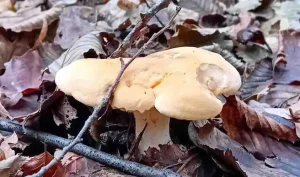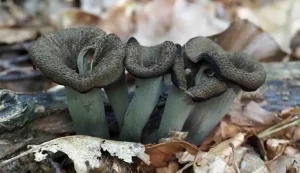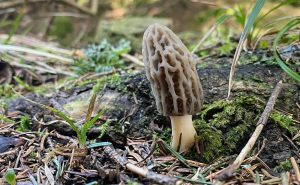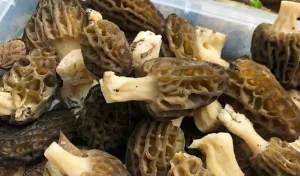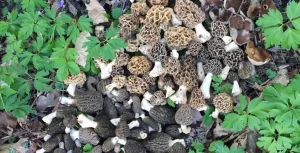Ash trees and morels: In the quest for morel mushrooms, understanding their habitat is key to a successful forage. One notable companion in this journey is the ash tree, a beacon for those seeking the elusive morel.
Let’s delve into the sweet relationship between morels and ash trees, explore the types of trees that attract these fungi, and uncover the secrets to identifying ash trees for a fruitful morel hunt.

Morels’ Sweet Tooth
Unbeknownst to many, morels have a penchant for trees with sweet sap. This affinity explains why morels exclusively associate with trees that produce such sap. Morels also favor maples, hazelnuts, elms, and hornbeams… For those eager to learn more about the trees and biotopes conducive to morel growth, our morel hunting guide offer insights into this unique ecosystem.
The Ash-Morel Connection
A significant portion of in some states harvested in some states is found near ash trees. The common morel (Morchella esculenta), in particular, forms a perfect pair with the ash. Foragers often note the scarcity of common morels under other types of trees when ash trees are present, highlighting a preference for this specific environment.
Identifying Ash Trees to Find Morels
Recognizing ash trees is a crucial skill for morel hunters. Resources are available to help distinguish ash trees, even without their leaves—a common scenario during the morel season as ash trees have yet to fully leaf out. This knowledge is vital for quickly identifying promising spots for morel foraging.
Final Tips for Morel Hunting
To increase your chances of finding morels, follow these essential steps:
- Believe in the Power of Ash Trees: Convincing yourself of the ash tree’s role as a morel magnet is the first step.
- Learn to Identify Ash Trees: Acquiring the skill to identify ash trees, with or without leaves, will make you more efficient in the field.
- Scout for Ash Trees: Finally, venture into areas where ash trees are present. Morels can often be found within a few meters of these trees’ trunks.
By understanding the symbiotic relationship between morels and this tree, foragers can enhance their search for these prized fungi. Whether exploring the types of mushrooms that grow on ash trees, the best wood for morels, or distinguishing safe morels from their poisonous lookalikes, knowledge is your best tool.
